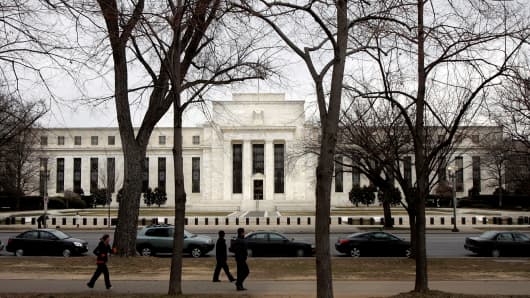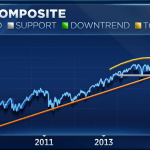
Here’s the two questions that matter today:
1) How does the Fed communicate its intentions? The crowded trade is “dovish Fed.” The risk, therefore, is that the Fed appears more hawkish than anticipated. Everyone believes Yellen will reiterate they plan to keep rates low for an extended period. But how to communicate that? Simply saying the Fed is “data dependent” may not enough, in fact that could be interpreted as being too hawkish.
She needs to tick off a few boxes to convince the trading community that they will not be moving fast. It would help to make some passing reference to the continuing volatility in oil and perhaps even to the credit market.
The Fed has said it would take a “balanced” approach to raising rates and that “economic conditions may, for some time, warrant keeping the target federal funds rate below levels the committee views as normal in the longer run.”
One way to project a “dovish” position is to lower expectations for a rate hike. The current consensus is for rates to be roughly 100 basis points higher a year from now. That would imply four rate hikes of 25 basis points each, likely at each of the four meetings with press conferences: December 16, March 16, June 15, September 21.
If the Fed were to indicate that rates may be lower than that a year from now, that would certainly be dovish.
Another way would be to say they need to see more evidence that inflation is moving closer to their 2 percent goal.
2) What is the market reaction? Equity volatility has seen elevated, but not dramatically so, going into the Fed meeting. Part of this is due to the continuing volatility in oil, and, on Friday, in the credit markets.
I noted Tuesday that the quadruple witching expiration, the quarterly expiration of stock and index options, and stock and index futures that happens on Friday, is not normally a market moving event though it brings heavy volume. The concern this time is that because of the Fed this could be different. If the Fed appears to be “hawkish” (raising rates more aggressively) the S&P 500 could drop through several key levels where option prices are pegged for the Friday expiration, which would force additional selling.
If the market perceives the Fed remains “dovish,” the consensus is for a rally going into the close of the year. We are in a seasonally strong period, tax loss selling is abating, many have been underweight stocks going into the Fed. Of course, stability in oil and high yield will be important factors.
[“source -cncb”]




